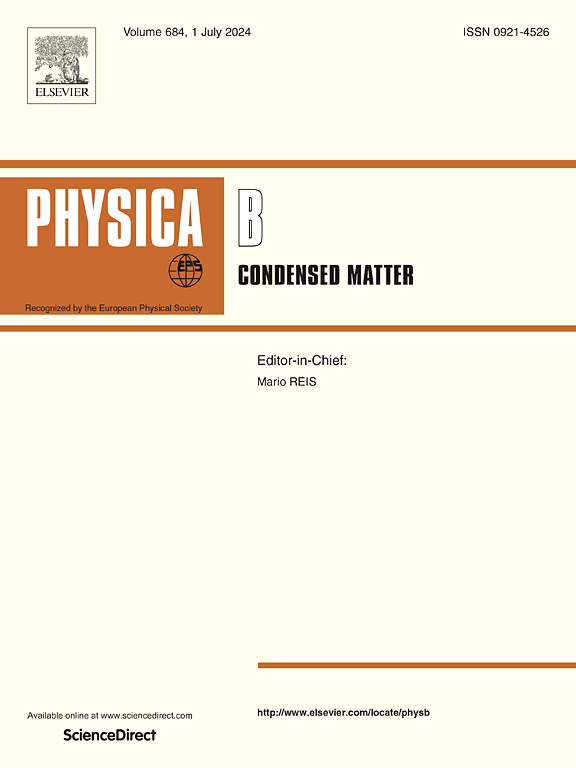The high-pressure phase transition in tin diselenide discovered by Raman scattering and X-ray diffraction analysis
IF 2.8
3区 物理与天体物理
Q2 PHYSICS, CONDENSED MATTER
引用次数: 0
Abstract
The two-dimensional (2D) semiconductor tin diselenide (SnSe2) has recently gained great attention in electronic and optical attributed to its unique physical properties. Here, we present a pressure-dependent study on the phase transformation behavior of the SnSe2 crystal range from ambient pressure up to 34.81 GPa. In order to study the phase transition behavior of SnSe2, we employed In situ, high-pressure Raman spectroscopy and X-ray diffraction (XRD). The obtained single-crystal XRD data reveal that at 34.81 GPa, the lengths of the a and c axes are reduced by approximately 9.2 % and 21.7 %, respectively, compared to their values at 0 GPa. This indicates that the lattice parameter a is less affected by pressure compared to the lattice constant c. At a pressure of up to 8 GPa, the low-frequency vibrational mode (approximately 119 cm−1) becomes significantly weaker and then undetectable. Surprisingly, a Raman band gradually emerges at around 80 cm−1. Additionally, the high-frequency vibrational mode gradually splits into two modes, and the Raman signal weakens and broadens. These phenomena suggest a decrease in the crystalline symmetry of SnSe2 and the occurrence of semiconductor-to-metal transitions from 8 GPa onward. Our findings offer a new avenue for further investigation into the complex phase transition mechanisms in transition metal dichalcogenides-related materials.
求助全文
约1分钟内获得全文
求助全文
来源期刊

Physica B-condensed Matter
物理-物理:凝聚态物理
CiteScore
4.90
自引率
7.10%
发文量
703
审稿时长
44 days
期刊介绍:
Physica B: Condensed Matter comprises all condensed matter and material physics that involve theoretical, computational and experimental work.
Papers should contain further developments and a proper discussion on the physics of experimental or theoretical results in one of the following areas:
-Magnetism
-Materials physics
-Nanostructures and nanomaterials
-Optics and optical materials
-Quantum materials
-Semiconductors
-Strongly correlated systems
-Superconductivity
-Surfaces and interfaces
 求助内容:
求助内容: 应助结果提醒方式:
应助结果提醒方式:


